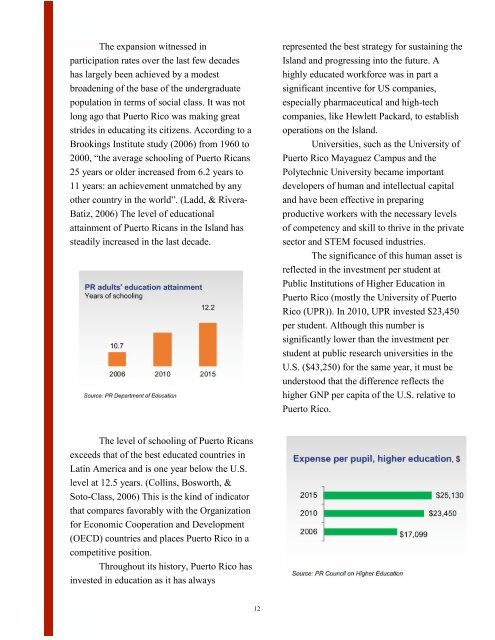CLC-Conference-Proceeding-2018
You also want an ePaper? Increase the reach of your titles
YUMPU automatically turns print PDFs into web optimized ePapers that Google loves.
The expansion witnessed in<br />
participation rates over the last few decades<br />
has largely been achieved by a modest<br />
broadening of the base of the undergraduate<br />
population in terms of social class. It was not<br />
long ago that Puerto Rico was making great<br />
strides in educating its citizens. According to a<br />
Brookings Institute study (2006) from 1960 to<br />
2000, “the average schooling of Puerto Ricans<br />
25 years or older increased from 6.2 years to<br />
11 years: an achievement unmatched by any<br />
other country in the world”. (Ladd, & Rivera-<br />
Batiz, 2006) The level of educational<br />
attainment of Puerto Ricans in the Island has<br />
steadily increased in the last decade.<br />
represented the best strategy for sustaining the<br />
Island and progressing into the future. A<br />
highly educated workforce was in part a<br />
significant incentive for US companies,<br />
especially pharmaceutical and high-tech<br />
companies, like Hewlett Packard, to establish<br />
operations on the Island.<br />
Universities, such as the University of<br />
Puerto Rico Mayaguez Campus and the<br />
Polytechnic University became important<br />
developers of human and intellectual capital<br />
and have been effective in preparing<br />
productive workers with the necessary levels<br />
of competency and skill to thrive in the private<br />
sector and STEM focused industries.<br />
The significance of this human asset is<br />
reflected in the investment per student at<br />
Public Institutions of Higher Education in<br />
Puerto Rico (mostly the University of Puerto<br />
Rico (UPR)). In 2010, UPR invested $23,450<br />
per student. Although this number is<br />
significantly lower than the investment per<br />
student at public research universities in the<br />
U.S. ($43,250) for the same year, it must be<br />
understood that the difference reflects the<br />
higher GNP per capita of the U.S. relative to<br />
Puerto Rico.<br />
The level of schooling of Puerto Ricans<br />
exceeds that of the best educated countries in<br />
Latin America and is one year below the U.S.<br />
level at 12.5 years. (Collins, Bosworth, &<br />
Soto-Class, 2006) This is the kind of indicator<br />
that compares favorably with the Organization<br />
for Economic Cooperation and Development<br />
(OECD) countries and places Puerto Rico in a<br />
competitive position.<br />
Throughout its history, Puerto Rico has<br />
invested in education as it has always



